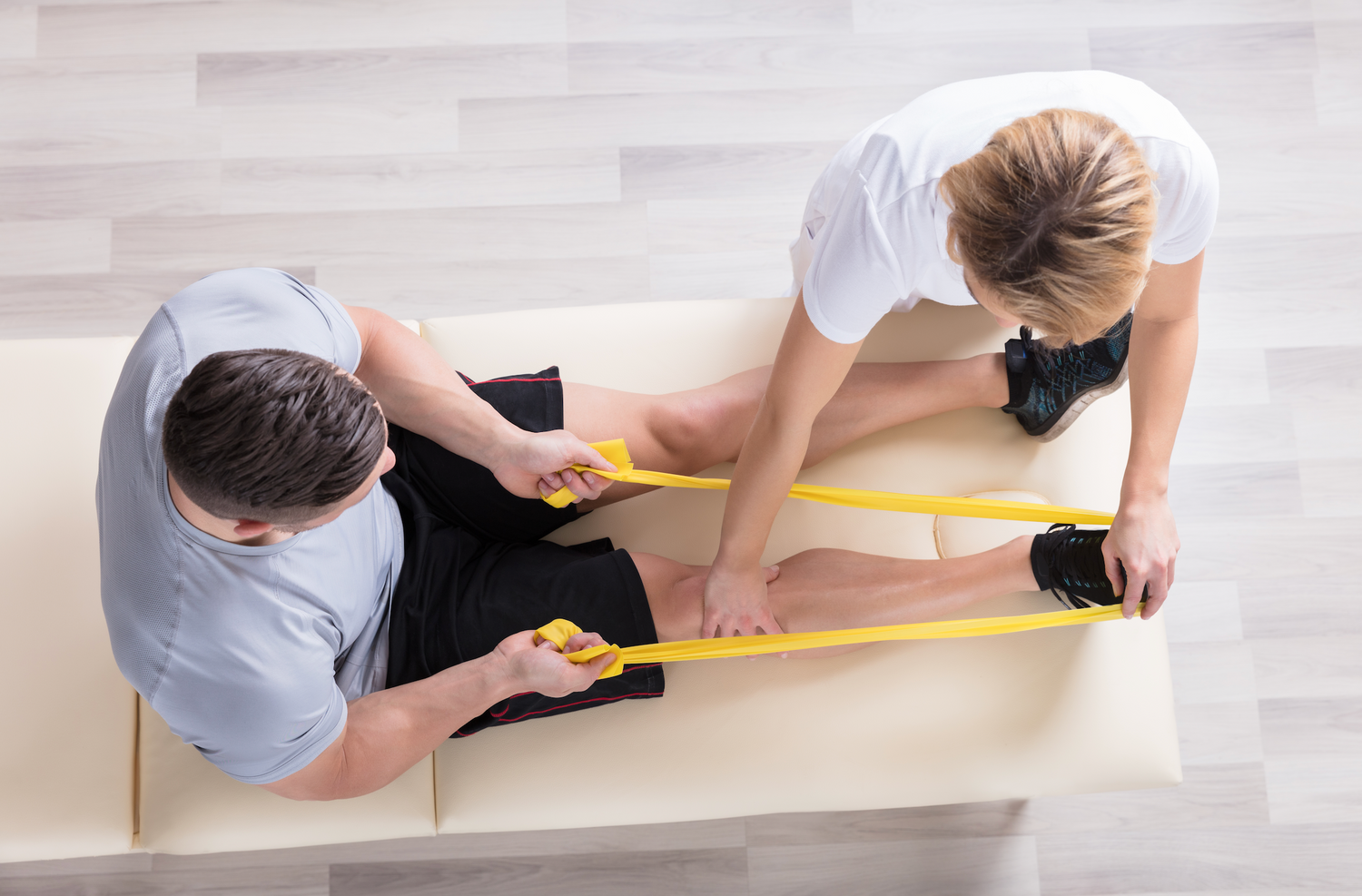Shin splints are the worst! They are one of the reasons I became a physical therapist (to find a solution to my own problem), and are a leading, not-so-fond memory of boot camp for many a client through the years. The good news about shin splints is that once the cause has been identified (and eliminated), the pain disappears. The bad news? What if they’re not shin splints at all? How do you eliminate a problem if you don’t know what the problem is?
The importance of identifying the underlying problem - and not just the pain - has been a recurring theme throughout this article series, and I hope that I have conveyed its importance to your longevity in any physically-demanding pursuit (self-inflicted or not). In this final article on selection injuries, we’ll discuss shin splints and other injuries that affect the lower leg.
If you experience pain or injury that is not healing, you should seek the consultation of a qualified healthcare professional who regularly treats injuries in sport and tactical athletes. The information that follows is for your education and should not take the place of an appropriate evaluation by a licensed healthcare provider.
Shin
Shin Splints
Shin splints are a common problem for runners who ramp up their mileage too quickly, and service members who are unaccustomed to running in boots or under load. Also known as medial tibial stress syndrome, muscle and bone stress on the inner side of the shins causes irritation. Shin splints can be incredibly painful and are usually felt along the inner shin of both legs during running. The pain is rapidly relieved with slowing to a walk and may disappear entirely with rest.

Shin splints usually heal within two weeks if you avoid high impact activities, and they respond well to icing and stretching of the shin and calf muscles. Some people find compression socks or kinesiology taping to be helpful to manage shin splint pain during activity. Repeated episodes of shin splints despite rest can be caused by scar tissue buildup or improper mechanics and may need further investigation to get rid of them for good.
Stress Fracture
A less common type of shin splints can affect the muscles on the front of the shin bone. However, pain along the front of the shin can be mistaken for a stress fracture in the tibia bone. A stress fracture is caused by repeated (rather than sudden) mechanical stress that exceeds the strength of the bone. Running athletes are at the highest risk for the injury, particularly with sudden increases in training (mileage, intensity, or frequency). Weightlifters learning explosive or Olympic style barbell exercises may also sustain this injury as a result of excessive “foot stomp” as they learn to reconnect with the ground.
A tibial stress fracture often produces a focused, sharp area of pain on the bony ridge of your shin bone with high impact activity such as running on jumping. In contrast to shin splints, the pain from a stress fracture may not be relieved with rest and may keep you up at night. While some stress fractures are considered low risk, the tibia is not one of them. A stress fracture here left unattended can progress to a full break that requires surgery and a lengthy recovery period.
If you are having persistent shin pain after a selection event that is not resolving with rest, stop running. See a healthcare professional with experience in sports medicine as soon as possible to receive the appropriate tests and imaging.
Exercise-Induced Compartment Syndrome
The shin is a tricky area, isn’t it? In addition to a stress fracture, another sinister problem can lurk here. Compartment Syndrome is a condition of abnormally high pressure that builds up in one of the compartments of the lower leg. These compartments are encased in stiff, inflexible sheaths called fascia, and serve as containers for groups of muscles, nerves, and blood vessels.
Acute Compartment Syndrome is a rapid-onset, emergency condition due to traumatic injury (such as a direct blow or fall on the lower leg) that causes a rapid rise in pressure. Acute compartment syndrome is an actual emergency condition, and swift surgical intervention is required to relieve the pressure.

Alternatively, Exercise-Induced or Exertional Compartment Syndrome is a more chronic condition affecting those engaged in events requiring sustained running and physical stamina. When you exercise, the muscle fibers and blood vessels swell in size, increasing volume by about 20%. In long-term exercisers, this normal expansion during activity can create problems if the compartment is already narrowed because of muscle growth or scar tissue.
ECS is often described as feeling intense tightness or “fullness” and aching pain in the shins that worsens with prolonged activity and slowly resolves with rest. The lower leg(s) may feel tense and sore to the touch, but the pain is rarely isolated to one specific spot. A pattern of repeated episodes over several years is quite common; symptoms occur whenever you ramp up training, and no amount of icing or stretching relieves the pain. Repetitive eccentric activity such as descending mountainous terrain can contribute to ECS, as can improper exercise or running mechanics. Anabolic steroids and creatine supplements have also been implicated in the development of ECS, as they increase muscle volume.
A comprehensive and customized physical therapy program can be quite successful in treating ECS and may include a combination of soft tissue and manual therapy methods, correction of muscle imbalances, and training in more efficient exercise or running techniques. While ECS is not a medical emergency, it can cause long-term side effects such as reduced exercise tolerance and declining muscle strength.
If you experience repeated bouts of lower leg pain with exercise that remain undiagnosed or do not respond to usual treatments for shin pain, find a sports medicine-trained healthcare professional who can perform the appropriate tests and measurements.
Ankle and Foot
Tendinitis
The peroneal muscles attach along the outer side of your lower leg and help to control the side-to-side motion of the foot. The tendons of these muscles wrap around the outer ankle and foot and are prone to overuse with sudden increases in running or rucking. Tendinitis, or inflammation of the tendons, often causes pain along the outer ankle just behind the ankle bone. You may be able to feel one or two tender bands (the tendons) in this area. Typically, the pain eases as you start running but then returns as the session progresses.

Self-treatment for tendinitis includes ice for pain, heat for stiffness, stretching any tight calf muscles, and a gradual return to high impact activities over two to three weeks. The problem is often caused by overuse, but faulty mechanics, muscle imbalances, or mobility issues can contribute to repetitive injuries. A physical therapist can determine if you have a tendon injury and will design a treatment plan to restore tissue strength and normal mechanics.
Ankle Sprain
A rolled or twisted ankle is probably the most common injury shared by sport and tactical athletes. Whether you stepped in a hole or landed awkwardly on uneven terrain, your ankle steps up to the challenge of keeping your brain and body upright. The ligaments that attach your ankle bones together may stretch or tear in the process, known as a sprain injury.
The vast majority of ankle sprains occur due to the foot rolling inward toward the opposite foot. You may have heard or felt a “pop” in the ankle when it rolled, followed by a sharp pain on the little toe side (“lateral” side) of your ankle. Most ankle sprains will bruise and swell within 24 hours of injury. Even the simplest ankle sprain can take 2-4 weeks to heal. During this time, low or non-impact exercise such as cycling and swimming yield the most benefits.
Too often, lateral ankle sprains cause problems many years after injury due to incomplete recovery or unidentified collateral damage to the peroneal tendons. There’s a name for this catch-all condition of poor ankle performance - chronic ankle instability - and it can be a significant source of disability for athletes attempting to compete at the highest levels.

To avoid chronic ankle instability, make sure you regain all of your ankle mobility, strength, and balance after a sprain injury. There is a chain reaction that travels up the leg with every step - if the ankle doesn’t move correctly, compensations and pain can be felt through the knee, hip, and lower back. Do you know who can help you identify if you have a residual ankle issue that’s causing other problems? You guessed it, a physical therapist!
Jones Fracture
We’ve seen that a twisting injury can cause a host of problems on the outer side of the ankle. It can also affect the foot, where the direct impact causes a crushing or twisting force that injures the 5th metatarsal bone. A Jones fracture is a break at the near-end of the bone that runs along the outer (little toe) side of the foot. The injury is more common in people with high arches who are naturally more susceptible to rolling their ankles.
While your ankle may hurt, a Jones fracture causes pain, swelling, and bruising on the outside of your foot below the ankle. You may notice the pain to be “aching” rather than sharp. An inability to walk without a limp for days after an injury is a sign you may have a fracture, and need to seek care.
Due to its unique location that sustains high impact forces and possesses a low blood supply, a Jones fracture can be quite slow to heal. While surgery is not always required, in some cases, it may actually help the athlete return more quickly to competition. If you felt a “pop,” develop worsening swelling or bruising along the outer foot, or continue to limp despite rest, see a sports medicine professional soon as possible to receive the appropriate tests and imaging.
In this article series, we covered some common (and not so common) injuries that can occur as the result of selection events. As you may already know, many aches and pains will heal on their own with sufficient rest and recovery. However, some injuries won’t directly go away with time. If pain or injury is keeping you from training, don’t waste your time by ignoring the issue. When you have the opportunity to get answers from a professional, do it!
Dr. Rita Chorba is a physical therapist who specializes in helping tactical athletes maintain career (and life) longevity. She transitioned from a career working with athletes at the University of Arizona to the Marine Special Operations community aboard Camp Lejeune. She is currently in private practice and writes for the Marine Raider Patch magazine and her blog at www.alphapnr.com.
[apparel-ad]




Leave a comment
This site is protected by hCaptcha and the hCaptcha Privacy Policy and Terms of Service apply.